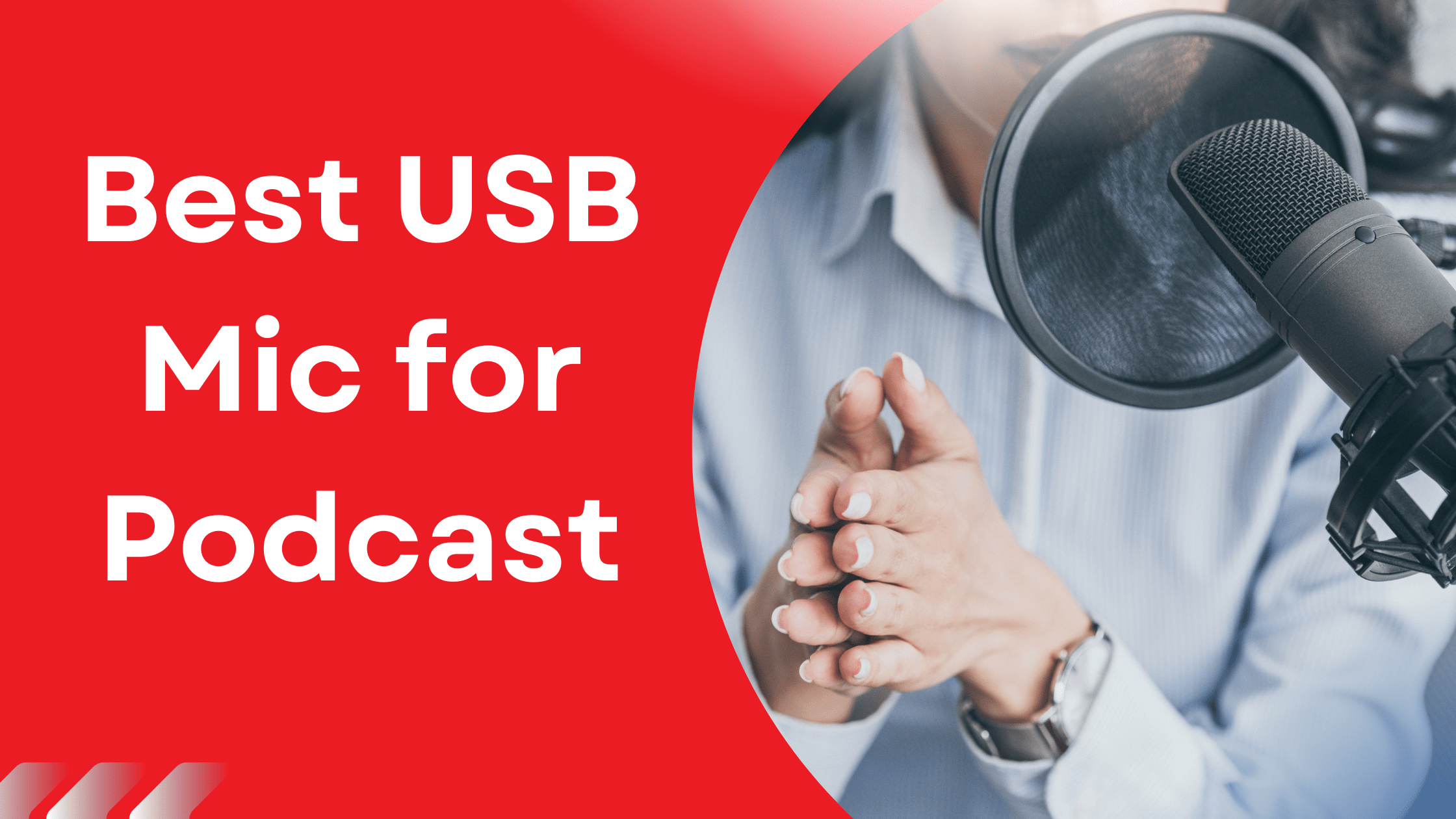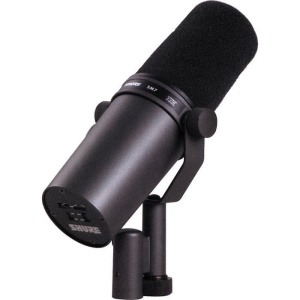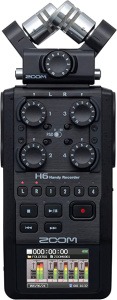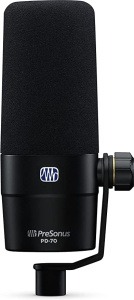Today, podcasting is a very popular medium. One of the most significant and rapidly expanding forms of communication in the information age, the voice acting is as basic as voices narrating stories, conducting interviews, or teaching strange and beautiful things.
You can find podcasts about almost any subject you can imagine by searching any of the service providers (such as Apple Podcasts, Spotify, etc.), including some truly outstanding podcasts about music. It also helps that, in terms of technical expertise and the basic equipment you’ll need to get started, making podcasts isn’t quite as difficult or expensive as you might assume. Forget about fancy cameras or far-off places. All you need is a good USB mic for a podcast, a computer or laptop to record it into, and a way to edit the audio afterward. Also, keep in mind that you’ll need something to say.
Podcast Fact 👉🏼 To sound good on a podcast, you need the combination of right talking speed (about 150-160 wpm).
When you hit record and begin podcasting, you’ll want to sound your best whether you’re going to speak on camera or as an inaudible voice in the ether. One of the best podcasting mics will enable you to launch your show.
Guide to Choosing the Best Microphone for Podcast
What is the best microphone for podcasting? And “How do you set up a professional podcasting studio?” are two common inquiries from those who want to create high-quality audio recordings. Poor audio will hinder the interactive experience you want to create with each show, content quality or not. If your audience has trouble understanding what you’re saying, they’ll probably switch to another podcast that offers better audio quality. You should learn to set up numerous mics if you want guests and co-hosts.
Inspect, Lookup: Comprehend the Specifications
Having a basic understanding of microphone terminology and characteristics will aid you in choosing the microphone that best meets your requirements. Here are the main characteristics and terminology you will frequently read in microphone descriptions:
- Polar Patterns or Directionality:
A microphone’s field of sensitivity, or the directions from which it takes or rejects incoming sounds, is defined by its polar pattern. An omnidirectional microphone reacts to noises originating from all angles.
- Types Of Microphones:
There are typically two types of microphones available for podcasting: dynamic and condenser. Both microphones capture sound in a unique way.
Through the use of electromagnetism, a dynamic microphone converts sound waves into electrical impulses. Compared to dynamic microphones, condenser ones are more delicate and sensitive. They can record clear audio at large bit rates and can capture high-frequency sounds.
- Connection Type:
The two types of microphones for podcasting are USB or XLR microphones when categorized by connector type. Because they are simpler to set up and use, USB microphones are the best choice for novices. To use and power XLR microphones, additional hardware is needed.
While the best USB microphones focus on keeping things simple, it may be worthwhile to choose a microphone that is either more specialized or more advanced overall for podcasting because your voice is the only of your product, so you should do everything you can to make it sound as good as possible.
To assist you in finding the ideal microphone for your needs and price range, we created a list of the top 10 best USB microphones for podcasts. No need to rely on the wimpy mic built into your laptop or phone. We’re confident that the following microphones should satisfy your requirements but before heading toward the details, here’s the list of the top 3 microphones to pick:
1. SHURE SM7B
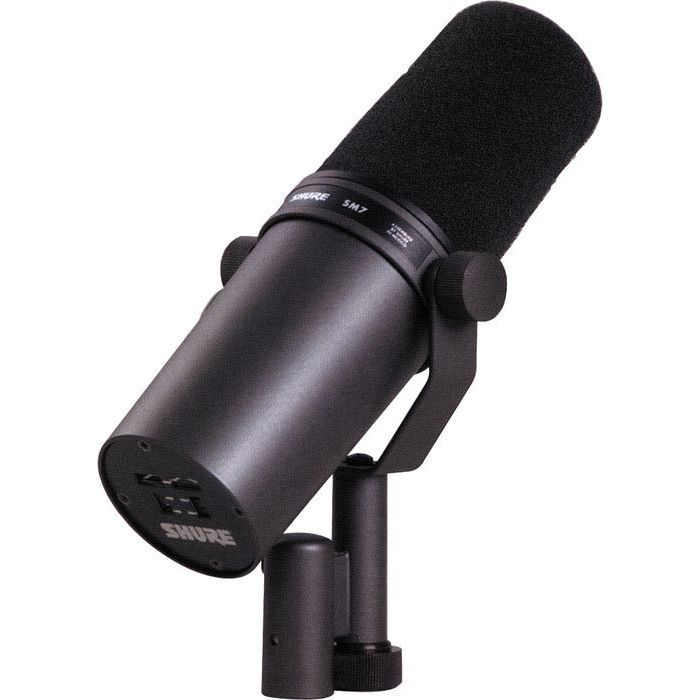
The Shure SM7B is a radio industry staple and has an extraordinarily strong microphone. Technically speaking, it is the “best” option for a podcasting microphone.
Specifications:
| Cost on average: | $360 (check prices on Amazon) |
| Connection: | XLR |
| Activity: | Dynamic |
| Size: | 13.3 x 7.2 x 4.8 inches |
Review:
The wide-range, smooth, flat frequency response of the SM7B dynamic microphone is suitable for music and voice in all professional audio applications. It has very good electromagnetic hum protection against computer monitors, neon lights, and other electrical equipment. A more stable bracket has been added to the SM7B, which is an update from prior models. It also comes with the A7WS windscreen for close-talk applications in addition to its basic windscreen. Popular radio and television microphones have good electromagnetic hum shielding. additional mounting bracket For use with microphone inputs rated from 19 to 300 ohms, the impedance is 150 ohms. Michael Jackson used this microphone for “Thriller,”
2. Zoom H6
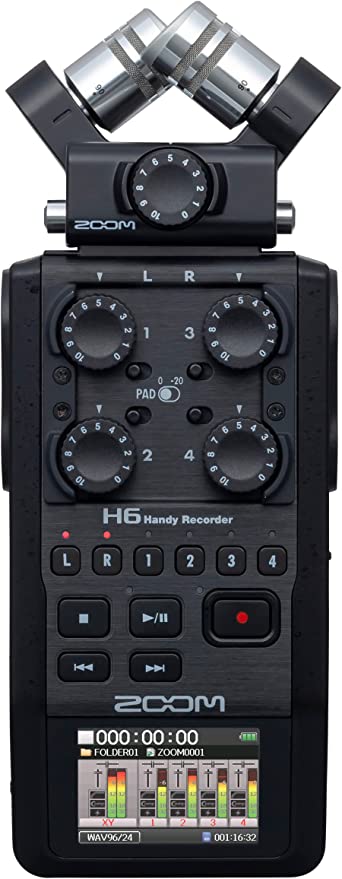
The Zoom H6 is presently their flagship model, and Zoom is a master of the digital recorder. Though it’s at the top of Zoom’s list, should it also be at the top of yours? Read this Zoom H6 review to learn more about what we’re here for.
Specifications:
| Cost on average: | $280 (check prices on Amazon) |
| Connection: | USB |
| Activity: | Condenser |
| Size: | 3.06 x 1.88 x 6.02 inches |
Review:
A portable recorder for use on the go is the Zoom H6. Up to six simultaneous 24-bit/96kHz, WAV audio channels can be recorded. For connecting your microphones, the device has 4 hybrid XLR/1/4′′ jacks with preamps. Every input has a hardware dial that can be used to set the gain before entering. Stereo X/Y and M/S microphone attachments on the recorder’s front make up the final two inputs, bringing the total to 6. For this purpose, the H6 is fortunate to come with built-in microphones, but you can also buy a shotgun or twin XLR/TRS jack connection adapter. Last but not least, the X/Y capsule supports a 3.5mm secondary input for even greater adaptability. It is highly recommended by the podcaster as the best mic.
3. PreSonus PD-70
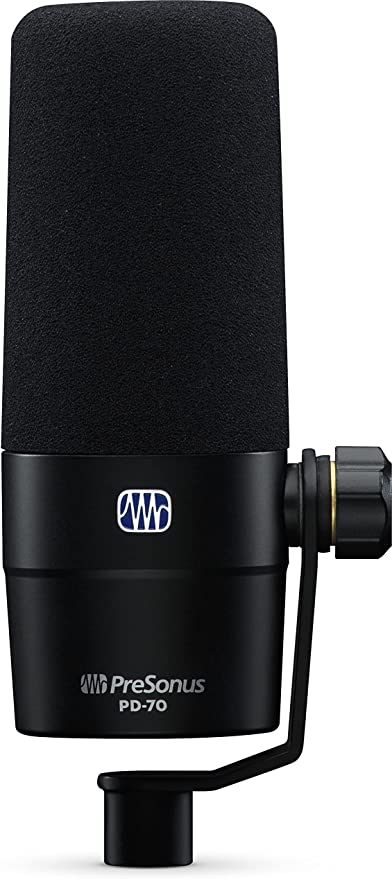
Want to upgrade the outdated microphone in your streaming or podcast setup?
What you’ve been looking for is the PreSonus PD-70! Every time you use this dynamic cardioid broadcast microphone, you can count on getting clear, rich vocals.
Specifications:
| Cost on average: | $90 (check prices on Amazon) |
| Connection: | XLR |
| Activity: | Dynamic |
| Size: | 2.5 x 3.25 x 6.25 inches |
Review:
You need a microphone that will deliver your voice to your audience with clarity and warmth, whether you’re launching your first podcast, informing your YouTube subscribers about the newest trends, or hosting a program for your local volunteer radio station from your living room. The PD-70 is designed to capture spoken words clearly and cleanly while removing breathiness and mechanical noise that could come between you and your audience. You can set up your broadcast studio in just about any room thanks to improved off-axis rejection; annoying reverberation, electrical hum, and the occasional passing car will all be eliminated, leaving only the pure, authentic sound of your voice.
4. Blue Yeti
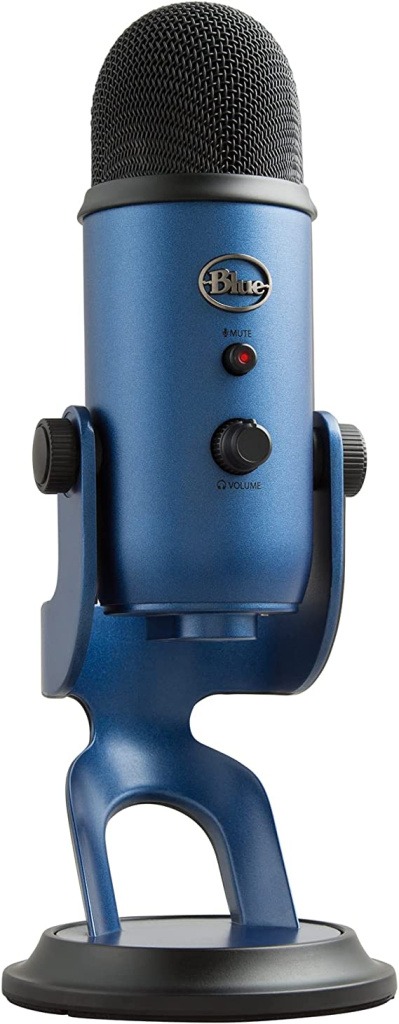
It’s amazing all around. Simple USB microphone that’s ideal for streaming and podcasting. 3 condenser capsules, 4 pickup patterns, plug-and-play functionality, volume control for the headphone output, and mic gain control.
Specifications:
| Cost on average: | $89 (check prices on Amazon) |
| Connection: | USB |
| Activity: | Condenser |
| Size: | 4.9 x 4.6 x 11.6 inches |
Review:
The Blue YETI has been a mainstay in the bedroom/amateur and semi-pro setup since at least 2009. It has been around for a considerable amount of time. Little has changed since the YETI’s birth; the design is almost unchanged, and the functionality is still flawless.
The YETI offers users a selection of 4 polar patterns. Because of its condenser diaphragm and high sensitivity, this microphone works best when used in conjunction with an appropriate gain staging technique. This microphone is a good all-rounder and a great and simple way to get started in the world of recording. It checks all the right boxes for someone wishing to use it for a variety of different applications.
5. Rode Procaster
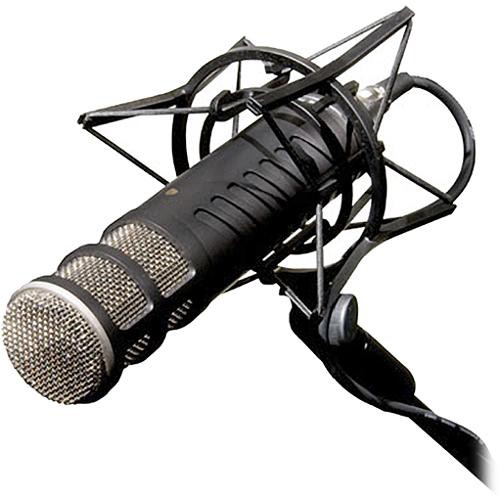
Procaster is a highly adaptable microphone that can take on practically any kind of voice. However, some very fundamental EQ is required, especially low cut. Procaster is similarly durable and well-made, but in comparison to some other microphones, it seems a little awkward and requires a swivel arm with a spider mount.
Specifications:
| Cost on average: | $154 (check prices on Amazon) |
| Connection: | XLR |
| Activity: | Dynamic |
Review:
The Rode Procaster Broadcast Dynamic Vocal Microphone is one of the pinnacle broadcast quality microphones for the twenty-first century. It was created as a no-compromise microphone for On-Air broadcast use. The Procaster is ideal for every application where a fantastic sounding, tough microphone with exceptional ambient noise rejection is required since it has a narrow polar pattern and a frequency response that is designed for voice. Additionally, the Procaster is reasonably priced and has an internal pop filter to lessen plosives. Comes with a zip pouch, a stand mount, and a 3/8-inch adaptor. Features of the Rode Procaster television-quality audio powerful dynamic capsule with Low impedance, balanced output for little handling noise, the capsule’s internal shock mounting a plosives-reducing internal pop-filter Robust.
6. Neewer USB Microphone with Stand Kit
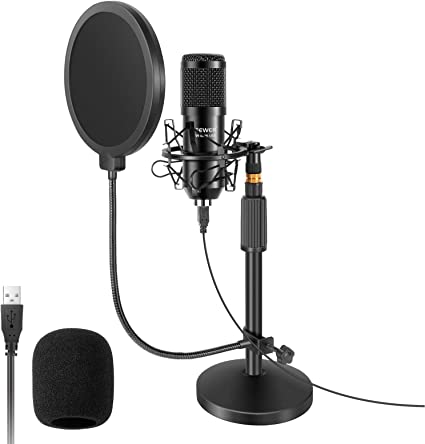
This condenser microphone was created using a professional sound chipset, allowing the USB microphone to support a high sampling rate for resolution. 192 kHz/24 bits of the sampling rate. The 20Hz–20kHz range has a flat, rounded frequency response: Extended frequency response is fantastic for voice-over, talking, and singing.
Specifications:
| Cost on average: | $15.9 (check prices on Amazon) |
| Connection: | USB |
| Activity: | Condenser |
| Size: | 15.94 x 7.48 x 3.86 inches |
Review:
7. Shure MV7
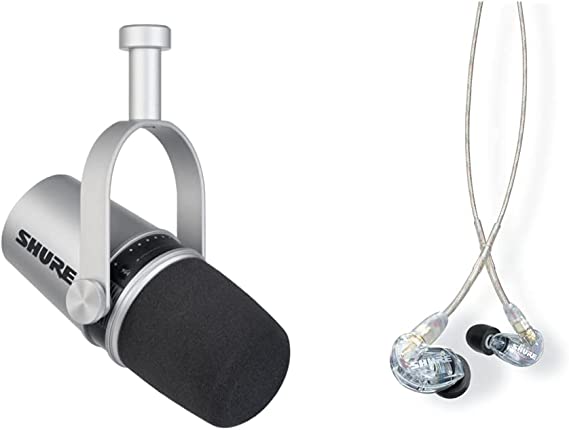
Shure discovered an ideal opportunity to introduce the MV7, an XLR/USB compatible microphone, thanks to the recent increase in live streaming and podcasting, which is mostly due to the pandemic that shall not be named.
Specifications:
| Cost on average: | $224 (check prices on Amazon) |
| Connection: | USB, XLR |
| Activity: | Dynamic |
| Size: | 4.3 x 12.3 x 5 inches |
Review:
Shure’s Voice Isolation Technology and Auto Level Mode are features of this dynamic microphone. Keeping the vocal components of a recording in focus is the goal of the former. The latter is said to use an inbuilt compressor to control levels to account for variations in vocal dynamics and user movement. Both of these capabilities help creators spend more time producing rather than on post-production. An extra cable will enable it to function with an iOS smartphone as well.
8. TONOR Cardioid
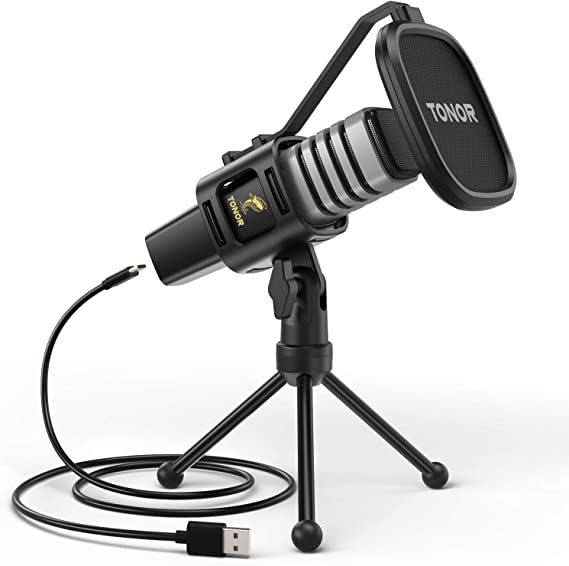
Tonor’s TC30 is a basic USB Type-A condenser microphone that’s of surprising quality and available at very reasonable rates. Its phenomenal sound out of the box and portable body make it highly recommended for beginner to intermediate users.
Specifications:
| Cost on average: | $15 (check prices on Amazon) |
| Connection: | USB |
| Activity: | Condenser |
| Size: | 9.25 x 4.13 x 5.59 inches |
Review:
Tonor’s TC30 USB Condenser Microphone captures audio input practically error-free. With a pop filter and a retractable tripod, it has a quality matte black travel-focused design that makes the microphone look much more expensive than it is.
9. Pyle PDMIKT100
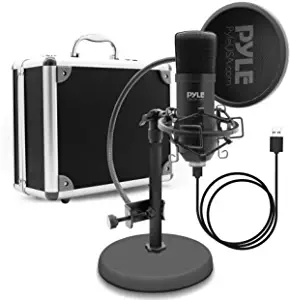
This small desk microphone is perfect for desktop recording, singing in the studio, playing video games, streaming, and podcasting. Works with Linux, Mac, and Windows PC operating systems. Use at home, the office, and in business.
Specifications:
| Cost on average: | $64 (check prices on Amazon) |
| Connection: | USB |
| Activity: | Condenser |
| Size: | 5.99 x 5.99 x 12.17 inches |
Review:
Computer desktop microphone kit with a shock mount stand, pile model Pdmikt100usb, for professional audio recording. Simple plug-and-play USB (for podcast recording streaming gaming) professional desktop microphone for broadcast audio Your PC connects via a straightforward USB “plug-and-play” process. Placement on any desktop, counter, or table with a gooseneck adjustable pop filter detached USB cable includes a lightweight aluminum flight case for simple setup and transportation.
10. AOKEO
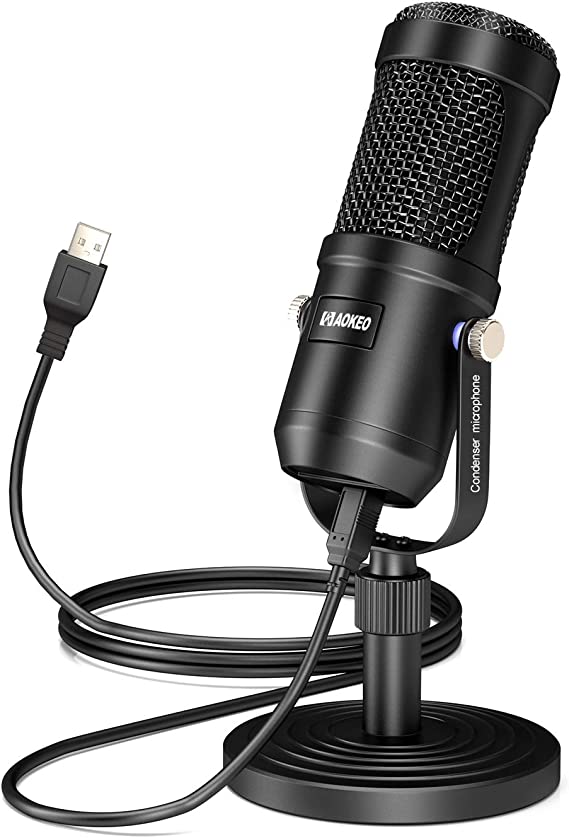
Get a desktop microphone right away if you need one. This product has a 12-year warranty and a 30-day replacement period. Offering customers high-quality, reasonably priced goods have always been a priority for Aokeo.
Specifications:
| Cost on average: | $40 (check prices on Amazon) |
| Connection: | USB |
| Activity: | Condenser |
| Size: | 11.57 x 5.59 x 4.56 inches |
Review:
Appropriate for all laptop, computer, and PC platforms. This professional pickup chip-equipped USB condenser microphone has a sampling rate of up to 192 kHz/24 bits. It enhances the smoothness, clarity, and authenticity of the sound that the microphone picks up. is the chosen recording tool.
Real-time observation on the bottom of the microphone is a headphone jack that enables you to listen to what is being recorded instantly and without pausing.
Signing Off: A Few Closing Remarks
Research is one of the most beneficial things you can do when choosing a microphone. As well as asking people about their favorite microphones, you can read professional audio review articles and user reviews on our website.
Another tactic to think about is sticking with well-known, reputable manufacturers of professional microphones. Many of them offer more affordable models that provide surprisingly high-quality sound.
Of course, it’s reasonable to expect that the better the microphone, the more money you’ll spend. But be sensible. Make sure your pick is acceptable for what you want to accomplish.

